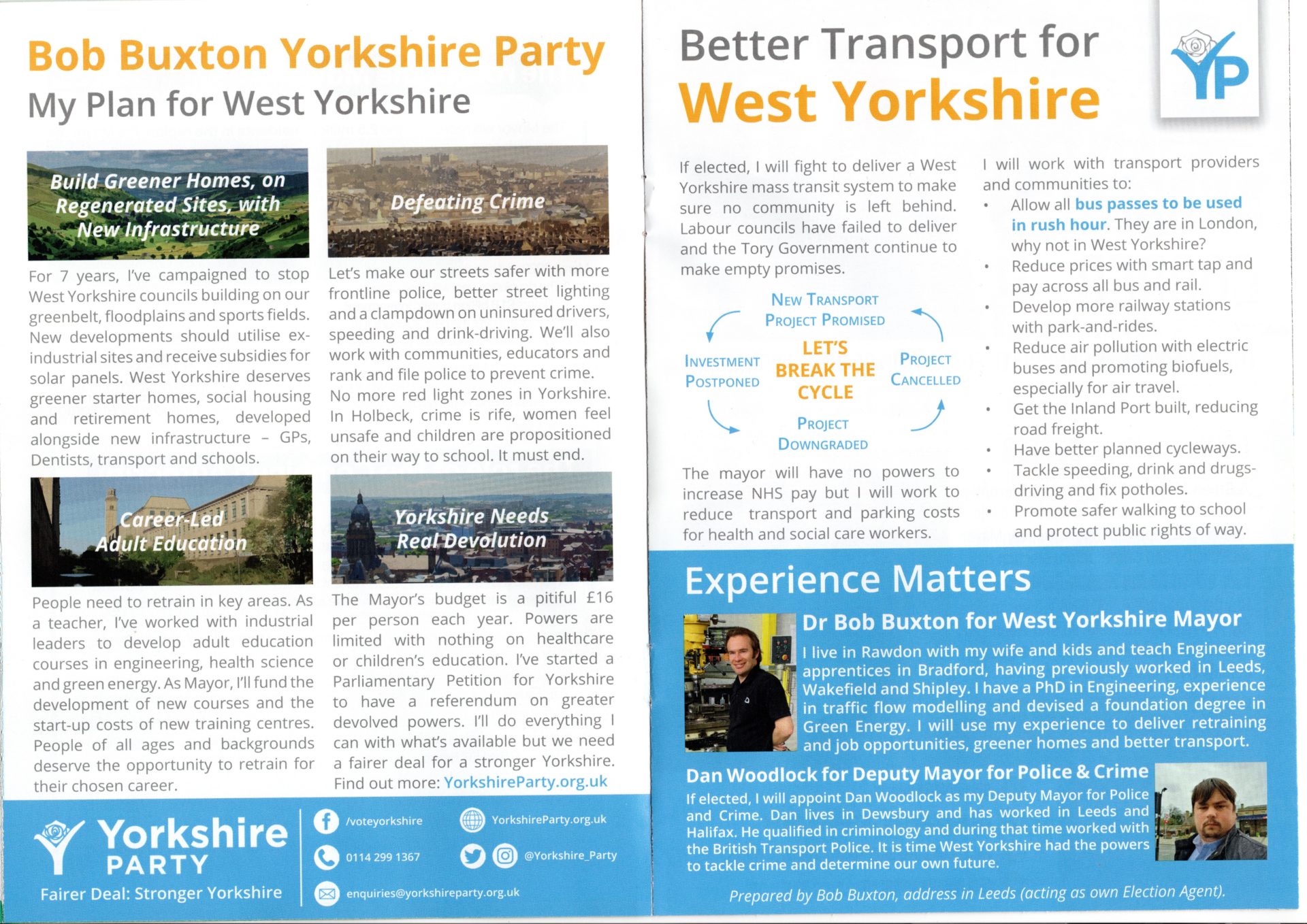The rise of the northern regional parties?

Most of the national coverage of the May 2021 elections focused on the successes and failures of the two main parties in the north of England. But much less attention has been given to the rise of the northern regional parties. Megan Killerby outlines in this post for CDE why we should be paying closer attention to these parties.
The 2021 elections have been described as some of the most important outside a general election the UK has ever seen. However, media commentary has largely overlooked a trend that could prove key to British politics’ “Northern question”: the rise of Northern regionalist parties.
“It’s about bloody time”
The Hartlepool by-election saw the arrival of a new type of political party in the North: one advocating for Northern independence, as an independent country under the name of the ancient Anglo-Saxon kingdom of Northumbria. The Northern Independence Party (NIP) was founded in late 2020 by ex-Labour activist Philip Proudfoot, and unlike other frequently non-ideological regional parties, the party openly advocates for socialism.
The NIP’s rise from obscurity was boosted by two major developments. The first was the rise of the party’s combative twitter account which currently boasts a follower count of over 60,000, ten times higher than the Yorkshire Party’s account. The second came when the party announced former Labour MP for Colne Valley Thelma Walker as their candidate for Hartlepool, promoting a wave of coverage in mainstream publications and a jump in party membership.
The NIP phenomenon is likely inspired by recent political trends. The growing importance of social media is upending political campaigns, allowing newcomers to gain popularity and attention without the usual avenues of mainstream media exposure or large campaigning infrastructure. The NIP is also capitalising on the growing salience of Northern identity in politics, as identified by POLIS’ postgraduate researcher Ryan Swift’s project. The party’s use of symbolism such as the Whippet, a dog popular in the North East, was mocked by detractors as a middle class activist (Proudfoot is a university lecturer) exploiting symbols of the Northern working class.
Hartlepool saw the party’s electoral debut hit an hurdle when the Electoral Commission did not approve the party’s registration in time for the vote. Thelma Walker appeared on the ballot as an independent candidate, and drew only 0.8% of the vote. Still, the NIP has signalled its intention to get registered in time for the upcoming Batley and Spen by-election. Time will tell if the party will fade away as a social media fad, or become an enduring presence and another contributing factor to Labour’s woes in the North.
Bubbling under: The Yorkshire Party
The rise of the NIP has received more mainstream and social media attention so far, but the Yorkshire Party’s continued advance may prove just as important for Northern politics. The Yorkshire Party (YP) began under the name Yorkshire First in 2014, becoming the first regionalist party in the North.
The party’s electoral success has been modest but growing ever since: the party’s vote share in Yorkshire increased from 1.5% to 4% in the 2014 and 2019 European elections, and from 1% in the 2015 general election to 2.1% in the 2017 and 2019 elections.
The 2021 West Yorkshire mayoral election saw the party’s best performance in a regional vote yet: party leader Bob Buxton won 9.7% of the first preference vote and 3rd place, narrowly ahead of the Green candidate. YP immediately celebrated the result as a milestone, declaring themselves to be the ‘third party of Yorkshire’.
The use of the supplementary vote system in the mayoral election undoubtedly helped the party compared to first past the post, but the party’s performance is interesting in the light of the several other options on the ballot for voters who wanted to register a protest against the two main parties: Green, Liberal Democrat, English Democrat, and Reform candidates were also on the ballot. That YP came out ahead of these parties is evidence for an appetite by a significant proportion of Yorkshire voters for a regionalist option.
The future seems promising for the Yorkshire Party. The party’s 3rd place finish in West Yorkshire, while overlooked by most national outlets, has been noticed by regional media. The importance of regional and Northern issues to national politics, from the Conservatives’ “levelling up” agenda to Labour’s struggles in its Northern heartlands, look set to keep much of the political conversation where a regional party such as the YP prefers it to be.
Looking ahead
The rise of the NIP and YP are just two developments in what is likely to come to be seen as an important election for Northern politics. The North East party saw some success at the council level, but even for the two main parties a focus on Northern identity appears to have paid dividends. Andy Burnham won reelection as Greater Manchester mayor on an increased vote share, in contrast to the national trend for Labour. It is suggested that Burnham’s success may be associated with his prominence in 2020 as an advocate for Manchester and the North, against what many Northerners saw as the UK government’s insensitive handling of COVID-19 measures in the region.
Northern regional parties are undoubtedly some distance off major electoral success, but after the 2021 elections it is clearer than ever these parties should not be ignored. Whether it comes to the increasing focus on Northern issues by the Conservatives and Labour, or the gradually rising vote share and influence of regional and secessionist parties, it seems likely that the Northern dimension of British politics will only become more important in the years to come.
Megan Killerby is a Leeds Law LLB graduate and an MA in International Relations student at Leeds' School of Politics and International Studies.
